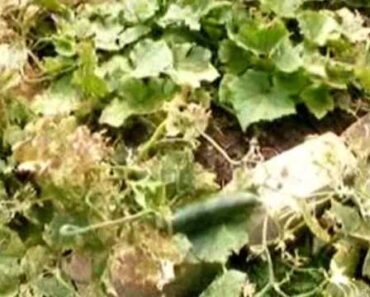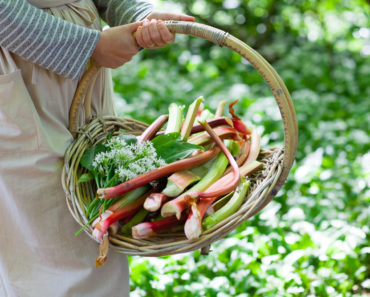In the old days, superstitious folks grew sage near their houses since they believed illnesses and death would protect their families. They were unaware of the plant’s medicinal properties, and only a few of them knew how to use it to treat and cure various ailments.
Sage (Salvia officinalis) is one of the medicinal herbs with a powerful effect against viruses and microbes, and it was used for centuries by herbalists all over the world. Its name Salvia comes from the Latin word “salvus” which can be translated as “I save” or “I heal.”
Sage is a herbaceous plant with variously small colored flowers cultivated as a medicinal or decorative plant native to southern Europe and the Mediterranean regions. It is a plant of the Lamiaceae family, and it can reach a height of up to two feet. Its purple flowers are arranged vertically around a common axis, and its opposite white-woolly leaves shine a silver color and diffuse a slightly bitter, aromatic scent.
Sage was and is still used to prepare various dishes worldwide, even though it doesn’t bring a specific flavor to food. It was added mainly due to its medicinal properties, and people do so even today without knowing the reasons behind using it.
Sage is a medicinal plant recommended as a natural remedy in the treatment and cure of hypertension, diseases of the intestines and stomach, spinal cord, respiratory tract inflammation, physical and mental fatigue, nervousness, but also in stimulating menstruation, fever, stress, low sexual tone, canker sores, stomatitis, skin ulcers, cough, bronchitis, dental abscesses, cellulite.
Let’s look at how we can use sage to treat various illnesses and what other benefits it can bring us.
Treating colds and the flu
The antidiuretic properties of sage help increase the body’s temperature, making it an ideal remedy to treat feverless phlegmy colds. I recommend using sage essential oil to deal with colds and cases of flu since this remedy never failed me. Add two drops of essential oil to honey and use it in your tea and even your coffee.
I have to mention that such a remedy may not be the best option for those suffering from dry skin, dry coughs, and persisting fevers. While using sage will dry out excessive mucosa moisture, it can worsen the symptoms in those suffering from dry mucous membranes and fevers.
Other uses
During breastfeeding, stage sage can be used to treat breast inflammation. Make a poultice and apply it to the inflamed breast. Even more, don’t throw away sage tea bags and use them for the same purpose. Back in the day, sage was also used on expectant mothers to help with later-stage pregnancies.
The pioneers used it extensively to treat wounds, bleeding, and ulcers since the plant help with excessive body hydration, but it’s also an anti-inflammatory.
In today’s beauty market, sage can be found in all sorts of cosmetics that help skin health. It was proven that sage helps remove wrinkles, and it also aids in skin regeneration. Women use diluted sage oil with coconut oil (as the base) to make various face creams.
One trick I’ve learned from a fellow outdoor enthusiast is to add a few drops of essential sage oil to my shampoo to deal with my greasy hair. People say it also helps you get rid of dandruff, but I can’t vouch for that since I don’t have such an issue to deal with.
Using sage-like in the old days
As I said before, sage was used by the pioneers for a multitude of purposes, but If you research it on your own, you’ll discover that the Romans were the ones that started using sage extensively. They were using it as a food seasoning, but it was also a preferred anesthetic and hemostatic agent back then. Here are a few of the old remedies you can still use today.
Use sage as a disinfectant.
You can make a sage decoction and gargle to clean your mouth and treat various inflammation of the mouth in a survival situation. The plant was used both internally and externally to treat multiple skin wounds and inflammation and added to a bath. Sage can help heal minor wounds faster.
If you get a nasty wound when exploring the outdoors and you have the luck of stumbling across a sage plant, you can use the fresh leaves directly on the damage to stop the bleeding.
Use sage as an anti-inflammatory.
Dealing with dental problems in the wilderness is one of the worst situations I can imagine. Luckily, sage can help you with oral hygiene, and it can treat gum inflammation, mouth ulcers, and much more. You can chew fresh leaves or make a poultice and apply it to cold sores on your lips or nose. You might not know this, but sage is one of the most common ingredients of toothpaste, and it can also be found in various chewing gum brands.
Use sage as a digestive aid.
As mentioned at the begging of this article, sage is often used to prepare various dishes, and it helps those suffering from indigestion. Some people add sage to their daily diets since it prevents them from being gassy. Even more, adding sage to your daily meals will stimulate the gallbladder.
Use sage for cleansing.
Sage tea, drunk often, strengthens the whole body, protects us from seizures, and has a very favorable effect on intestinal parasites. The early settlers used to drink sage tea regularly since it helped them deal with diarrhea and stomach cramps.
Sage is now used to treat gastric ulcers, and it is estimated that half of a gallon of a mild sage decoction can cleanse the intestinal wall, helping cure polyps and kill harmful parasites.
Use sage as an anti-fungal.
You can make a fresh poultice and apply it to the body’s areas affected by various fungal diseases. During one of my extended camping trips, I got rid of a toenail fungal infection just by applying fresh sage poultice on it every day.
You can add fresh sage leaves to your daily baths if you are dealing with fungal disease, and such practice was used since the time of the Romans.
Forgotten sage recipes from the early pioneers
The following are a few recipes I found during my time spent researching sage and its medicinal benefits. To my surprise, such remedies are used even today by many herbalists all over the world.
Sage syrup
To make the sage syrup, you will need 2 oz fresh sage leaves, 7 oz. granulated sugar, 9 oz. boiled water and lemon juice (the juice from one lemon should be enough).
Boil the water and add the sugar, stirring until the sugar melts completely. Chop the fresh leaves and add them to the water and let the mixture infuse for 24 hours. Strain the mixture into a pot, add the lemon juice and let it simmer for five minutes. Put the syrup in a jar or bottle and let it cool before placing it in the fridge.
Sage syrup is an excellent antioxidant, and it will last throughout the winter if store properly in the fridge.
Sage honey
This is perhaps the most common home recipe involving the use of sage, and all you need to do is get a large jar of honey and a handful of crushed sage leaves. Avoid using dried leaves to make sage honey since fresh leaves are much better.
Take the honey jar and heat it in a water bath until it becomes liquid enough to be stirred easily. Add the crushed leaves and mix well. Now you can let the jar cool or put the honey into smaller recipients for various rations. You can use the honey as you please for sweetening your tea or coffee or eat raw, one teaspoon per day.
Sage and vinegar poultice
This is one remedy I’ve discovered accidentally while reading about wilderness first-aid, and I learned the mountain men used it to treat bruises or sprains.
Get a handful of fresh leaves and flatten them using a rolling pin making sure you do not break the leaves. Put all the leaves into a pan and pour some vinegar until you barely cover the leaves. Let them simmer for about five minutes over low heat.
Pay attention since the vinegar should not boil, but it should heat enough until it starts to steam. That’s when the leaves are softened and blanched. Remove the leaves from the pan and place them carefully on a sterile cloth.
Fold the sterile cloth into a package that can cover the entire affected area. You will need to work fast since the bandage needs to be applied as hot as the patient can tolerate. Cover the bandage with one or more towels to retain the heat. Leave it in place for at least an hour or until the swelling has diminished.
This can be an effective remedy as far as wilderness first-aid goes when nothing else is available to treat inflammations in bruises, sprains, and closed fractures. The vinegar will bring the bruise to the surface and cool the area, while sage will reduce the swelling.
A final word
As you can see from this article, sage is a versatile medicinal plant, and it’s worth growing it in your garden. Even more, sage is a resilient plant that can be quickly grown from seeds, and it doesn’t require much care work. It just needs light and occasional watering, and it will thrive in any garden.
It was considered a sacred plant in ancient times; when impressive rituals were organized to collect it, sage is an excellent medicine, not just a herb in your kitchen.
>>> GET THIS BOOK TO DISCOVER MORE <<<





























